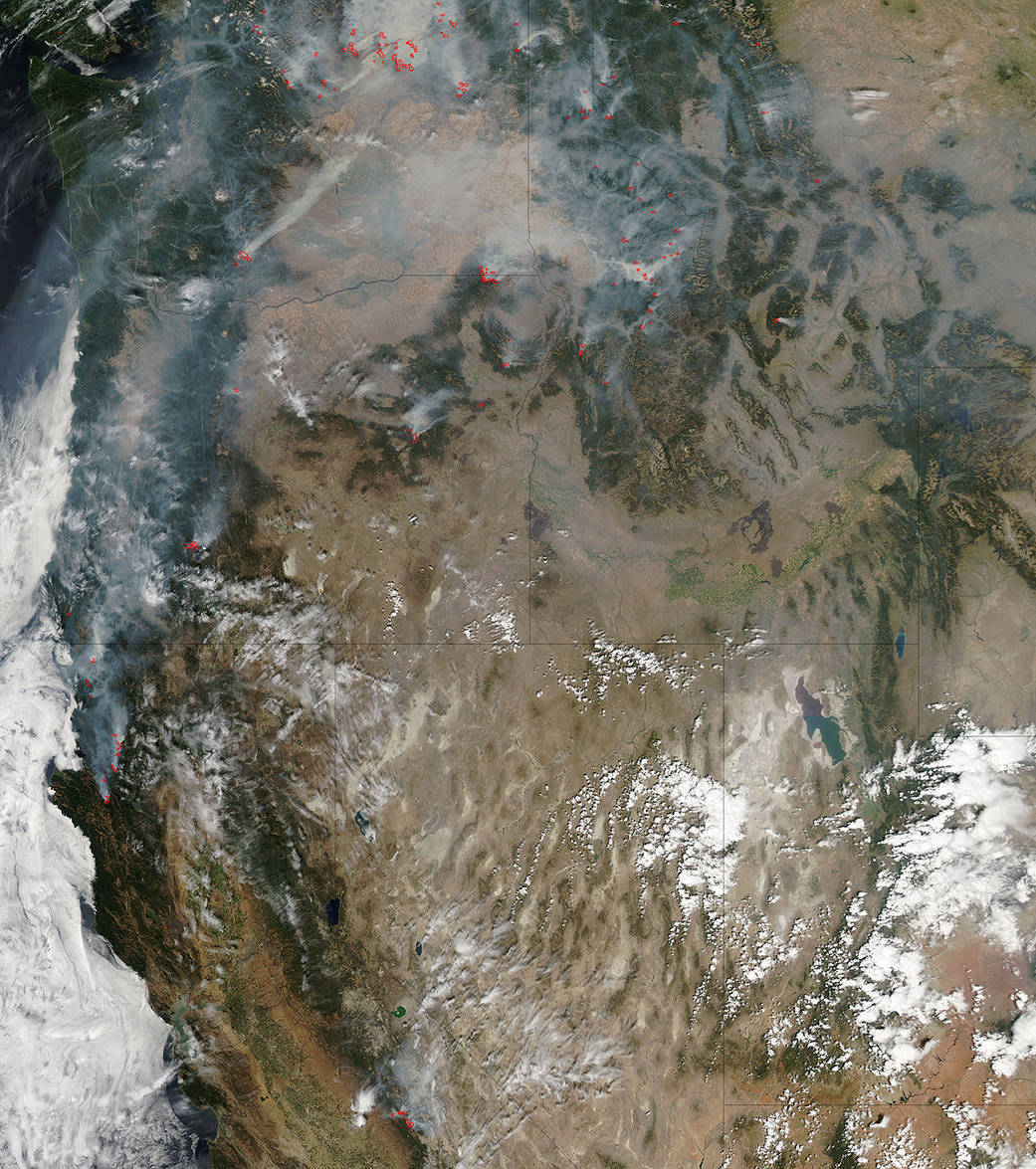On August 23, 2015, the Aqua satellite’s MODIS instrument captured this image of the ongoing onslaught of wildfires in the Western United States. There just seems to be no end in sight for these beleaguered states. Inciweb, an aggregating website for U.S. wildfires, reports 40 active fires in California alone. The largest to date is the Happy Camp Complex Fire which scorched over 134,000 acres and is currently listed as being 100% contained, but there are scores of other fires in California that are burning 30, 40, and 50 thousand acres at the same time. A good portion of the state is currently on fire.
Oregon is currently seeing 19 ongoing active wildfires. The largest reported is the Cornet-Windy Ridge Fire which has grown to 103,887 acres. This fire began on August 10 with a lightning strike and is currently 80% contained. The immediate danger with all wildfires, even those seemingly contained, is the shift in winds or the change in weather. Bad weather with lightning, little rain, followed by hot, dry conditions contribute to fires that, at present seem under control, start to grow once again. Also this is the kind of weather that starts the fire to begin with. Lightning strikes are the most common way, besides human started, that fires begin.
Washington state has not escaped this rampage. Twenty seven active fires are listed on Inciweb as of today Aug. 24 with the largest being the Okanogan Complex fire located east of Twisp. This fire began with a lightning strike on August 15. It quickly grew and is currently over 239,000 acres and is only 10% contained. There is rapid spreading of the fire in grass and brush. The burning of heavy timber is causing long range spotting making it more difficult to control the fire’s movement.
This natural-color satellite image was collected by the Moderate Resolution Imaging Spectroradiometer (MODIS) aboard the Aqua satellite on August 23, 2015. Actively burning areas, detected by MODIS’s thermal bands, are outlined in red. NASA image courtesy Jeff Schmaltz, MODIS Rapid Response Team. Caption: NASA/Goddard, Lynn Jenner



























